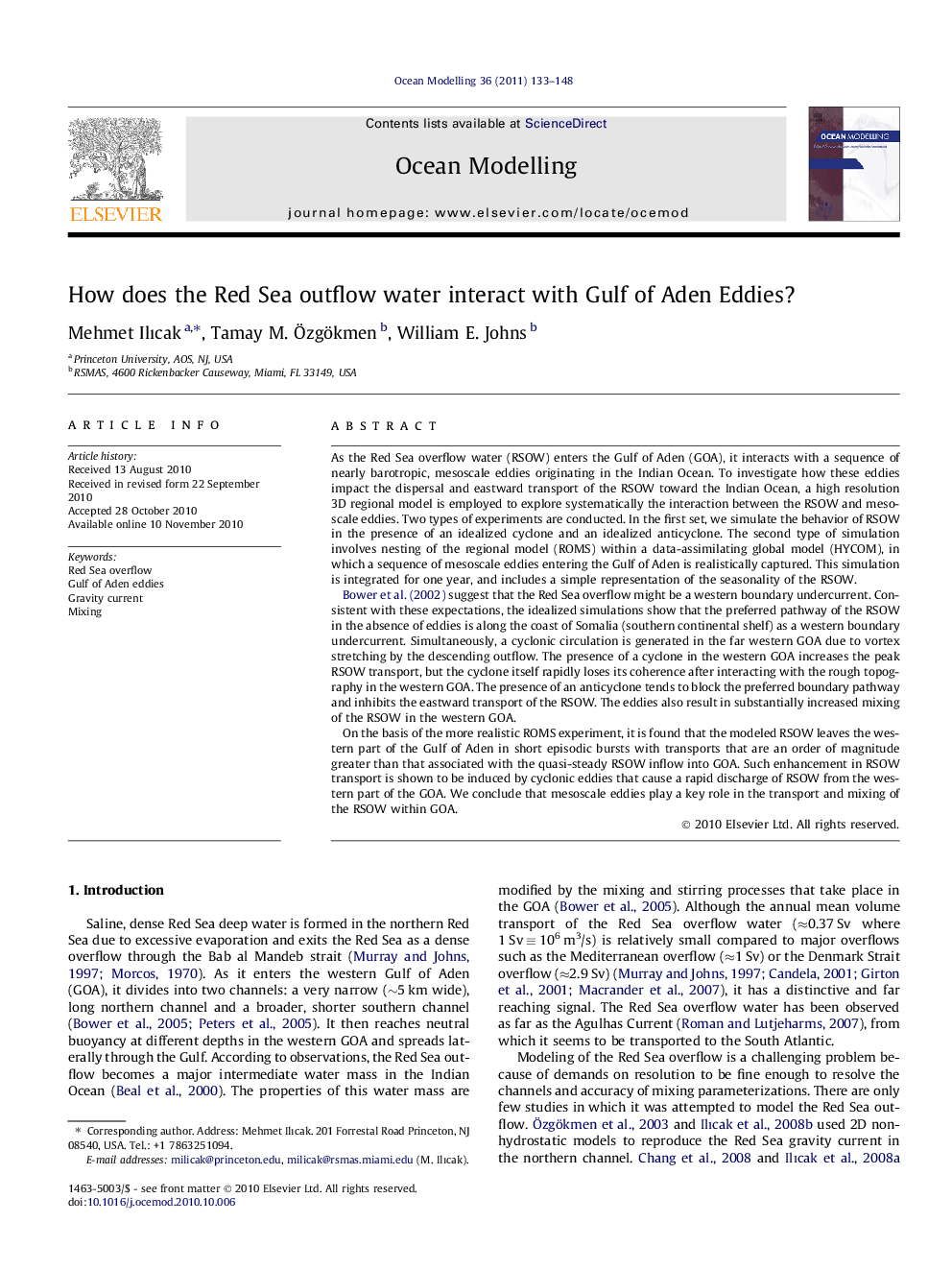| Article ID | Journal | Published Year | Pages | File Type |
|---|---|---|---|---|
| 4552311 | Ocean Modelling | 2011 | 16 Pages |
As the Red Sea overflow water (RSOW) enters the Gulf of Aden (GOA), it interacts with a sequence of nearly barotropic, mesoscale eddies originating in the Indian Ocean. To investigate how these eddies impact the dispersal and eastward transport of the RSOW toward the Indian Ocean, a high resolution 3D regional model is employed to explore systematically the interaction between the RSOW and mesoscale eddies. Two types of experiments are conducted. In the first set, we simulate the behavior of RSOW in the presence of an idealized cyclone and an idealized anticyclone. The second type of simulation involves nesting of the regional model (ROMS) within a data-assimilating global model (HYCOM), in which a sequence of mesoscale eddies entering the Gulf of Aden is realistically captured. This simulation is integrated for one year, and includes a simple representation of the seasonality of the RSOW.Bower et al. (2002) suggest that the Red Sea overflow might be a western boundary undercurrent. Consistent with these expectations, the idealized simulations show that the preferred pathway of the RSOW in the absence of eddies is along the coast of Somalia (southern continental shelf) as a western boundary undercurrent. Simultaneously, a cyclonic circulation is generated in the far western GOA due to vortex stretching by the descending outflow. The presence of a cyclone in the western GOA increases the peak RSOW transport, but the cyclone itself rapidly loses its coherence after interacting with the rough topography in the western GOA. The presence of an anticyclone tends to block the preferred boundary pathway and inhibits the eastward transport of the RSOW. The eddies also result in substantially increased mixing of the RSOW in the western GOA.On the basis of the more realistic ROMS experiment, it is found that the modeled RSOW leaves the western part of the Gulf of Aden in short episodic bursts with transports that are an order of magnitude greater than that associated with the quasi-steady RSOW inflow into GOA. Such enhancement in RSOW transport is shown to be induced by cyclonic eddies that cause a rapid discharge of RSOW from the western part of the GOA. We conclude that mesoscale eddies play a key role in the transport and mixing of the RSOW within GOA.
Research highlights► In this study, we model the interaction between the RSOW and Gulf of Aden eddies. ► The Red Sea overflow becomes a western boundary undercurrent in the absence of eddies. ► The modeled Red Sea overflow’s pathways rely on Gulf of Aden eddies. ► We find that the modeled RSOW exits western part of the GOA in short episodic bursts. ► The transport and mixing of the RSOW within GOA depend on mesoscale eddies.
